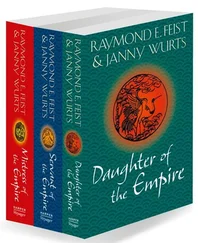Chalmers Johnson - The Sorrows of Empire - Militarism, Secrecy, and the End of the Republic
Здесь есть возможность читать онлайн «Chalmers Johnson - The Sorrows of Empire - Militarism, Secrecy, and the End of the Republic» весь текст электронной книги совершенно бесплатно (целиком полную версию без сокращений). В некоторых случаях можно слушать аудио, скачать через торрент в формате fb2 и присутствует краткое содержание. Год выпуска: 2003, ISBN: 2003, Издательство: Macmillan, Жанр: Старинная литература, на английском языке. Описание произведения, (предисловие) а так же отзывы посетителей доступны на портале библиотеки ЛибКат.
- Название:The Sorrows of Empire: Militarism, Secrecy, and the End of the Republic
- Автор:
- Издательство:Macmillan
- Жанр:
- Год:2003
- ISBN:9780805077971
- Рейтинг книги:4 / 5. Голосов: 1
-
Избранное:Добавить в избранное
- Отзывы:
-
Ваша оценка:
- 80
- 1
- 2
- 3
- 4
- 5
The Sorrows of Empire: Militarism, Secrecy, and the End of the Republic: краткое содержание, описание и аннотация
Предлагаем к чтению аннотацию, описание, краткое содержание или предисловие (зависит от того, что написал сам автор книги «The Sorrows of Empire: Militarism, Secrecy, and the End of the Republic»). Если вы не нашли необходимую информацию о книге — напишите в комментариях, мы постараемся отыскать её.
The Sorrows of Empire: Militarism, Secrecy, and the End of the Republic — читать онлайн бесплатно полную книгу (весь текст) целиком
Ниже представлен текст книги, разбитый по страницам. Система сохранения места последней прочитанной страницы, позволяет с удобством читать онлайн бесплатно книгу «The Sorrows of Empire: Militarism, Secrecy, and the End of the Republic», без необходимости каждый раз заново искать на чём Вы остановились. Поставьте закладку, и сможете в любой момент перейти на страницу, на которой закончили чтение.
Интервал:
Закладка:
The biggest problem of all, however, is simply that the Central Asian republics are landlocked. Oil and gas must be transported to market through exposed pipelines, and on none of the proposed routes to market can security be fully guaranteed. Chechen rebels, Armenian irredentists, Iranian mullahs, and Afghan and Kurdish guerrillas threaten all known paths west and south from Baku. 31The only pipelines currently in operation connect the Caspian Basin north to Russia. International consortia have been created to lay pipelines on the bottom of the Caspian Sea but the five nations bordering on the sea do not have a legal agreement on how rights to the sea should be divided. Prior to the American attack on Afghanistan, the big American petroleum companies active in the area—Chevron (now ChevronTexaco), Union Oil Company of California (Unocal), Amoco (now British Petroleum-Amoco), Exxon (now ExxonMobil), and a few others—had all tried to get concessions from and strike pipeline deals with Azerbaijan, Kazakhstan, and Turkmenistan with little success. Only after the Americans started to build a complex of military bases in at least four different countries—Afghanistan, Kyrgyzstan, Pakistan, and Uzbekistan—did the situation begin to improve for these companies.
The pipeline race began in 1993 when Chevron entered into a forty-year deal with the government of Kazakhstan to exploit the Tengiz oil field and export its oil through a proposed new pipeline complex across the Caspian Sea to Baku and from there to the Russian Black Sea port of Novorossiisk. 32The obstacles to this project, in which Chevron has invested several billion dollars, have so far proved insuperable. The Western portion of the pipeline, which is complete, has two sections. One passes through Chechnya, where an anti-Russian rebellion is ongoing, and the other through Dagestan to the north, only slightly more settled politically. These are very difficult pipelines to protect from sabotage. Nor is export by ship from the Black Sea particularly profitable because the Turks have placed heavy constraints on the use of supertankers in the narrow Bosporus Strait into the Mediterranean to protect against a disastrous oil spill off Istanbul. The pipeline section from Kazakhstan to Baku across the Caspian remains in legal jeopardy because of conflicts over who owns the sea bottom. The project is also a joint venture with Russia, an arrangement that irritates the U.S. government, which wants to see oil and gas leaving Central Asia without passing through either Russia or Iran.
The list of people who backed the Kazakhstan pipeline reads like a who’s who of Republican oil politicians. Chevron’s chief adviser was Condoleezza Rice, then a Stanford University professor who joined the Chevron board in 1991 after serving for a year on Bush Senior’s National Security Council. She received a $35,000 annual retainer, plus generous stock options and other perks, and stepped down a decade later, just days before becoming Bush Junior’s national security adviser. The press often refers to her as Chevron’s “main expert on Kazakhstan” although she has never published anything about Central Asia. (The only book she has ever written without a collaborator is her doctoral dissertation, The Soviet Union and the Czechoslovak Army, 1948-1983: Uncertain Allegiance [1984].) Chevron was nonetheless so pleased with her role that it named a 129,000-ton Bahamian-registered supertanker after her. In late April 2001, the company quietly renamed the ship the Altair Voyager “to eliminate the unnecessary attention caused by the vessel’s original name.” 33Although sailors regard it as a bad omen to rechristen a ship, the vessel is, at least, a double-hulled tanker.
Dick Cheney, Bush Senior’s secretary of defense and Bush Junior’s vice president, helped broker the deal, while out of office, between Chevron and Kazakhstan as a member of Kazakhstan’s Oil Advisory Board. James A. Baker III, former secretary of state, mastermind of the scheme to get the Supreme Court to appoint Bush Junior president in 2001, and senior partner of the Houston and Washington law firm of Baker Botts, had a hand in the negotiations. Baker’s firm maintains an office in Baku staffed by five attorneys. He is a member of the U.S.-Azerbaijan Chamber of Commerce’s advisory council, as is Cheney. During the 1990s, the council’s cochairman was Richard Armitage, a veteran administrator of the American-sponsored anti-Soviet war in Afghanistan during the 1980s and undersecretary of state in the second Bush administration. Brent Scowcroft, Rice’s boss and mentor when he was Bush Senior’s national security adviser, is a member of the board of Pennzoil, an active investor in the Caspian Sea oil consortia.
The pipeline project currently most favored by our government is a 1,091-mile-long conduit that would begin at Baku and head in a northwesterly direction, passing through Azerbaijan just north of the rebellious Armenian enclave of Nagorno-Karabakh (not perhaps a wise place to put an oil pipeline bound for Turkey since the Armenians hate the Turks), through Georgia to its Black Sea port of Batumi, and then southwest across volatile Turkish Kurdistan, to Turkey’s deep-water Mediterranean port of Ceyhan. The cost of building it would be in the neighborhood of $3 billion. The United States likes this project because it avoids Russia and Iran while reaching the Mediterranean without passing through the Bosporus Strait and the Dardanelles. Even if it can be built and American troops can protect it, however, the pipeline would serve only Europe, a mature market with limited prospects for growth, whereas the real markets for Central Asian oil and gas are in East Asia. In addition, for the Baku-Ceyhan project to prove profitable, oil prices must remain above twenty dollars per barrel, a level that may not prove realistic.
Nonetheless, both the Clinton and the Bush administrations have vigorously supported this pipeline, and it is going ahead. In September 2002, U.S. Energy Secretary Spencer Abraham stopped briefly in Azerbaijan to officiate at a groundbreaking ceremony for its construction, and at the end of November the Georgian government approved routing it through the Borjomi valley, one of the country’s most scenic regions and a source of mineral water, which is a prime Georgian export. An official from a mineral water company protested that the plan was like building a pipeline “next to a Perrier or Evian reserve in France.” 34
The Clinton administration, which was an enthusiastic supporter of the Baku-Ceyhan project as well as of a proposed trans-Afghan pipeline discussed below, put American military forces in Central Asia to try to drive a wedge between the new Central Asian republics and Russia. In 1997, the United States dispatched 500 paratroopers from the Eighty-second Airborne Division in North Carolina to Kazakhstan to train Kazakh and other Central Asian troops. This was deemed so successful that the following year the United States did the same in Uzbekistan using U.S. troops from the Tenth Mountain Division. It then formalized these ties into a kind of military version of the “sister city” relationships so beloved by municipal chambers of commerce. The Department of Defense gave various state National Guard units training missions in Central Asia and responsibility for instructing troops from Central Asian lands that visited the United States. The Arizona National Guard got Kazakhstan, the Montana National Guard teamed up with Kyrgyzstan, and the Louisiana National Guard worked with soldiers from Uzbekistan. Two of these Central Asian nations are today sites of major permanent American military bases. 35The Tenth Mountain Division from Fort Drum, New York, is itself back in force at Khanabad, Uzbekistan.
Without question, the key post-9/11 military deployment supporting the Baku-Ceyhan pipeline was the dispatch in February 2002 of approximately 150 Special Forces and ten combat helicopters to the Republic of Georgia in the Caucasus. The cover story for this operation was that they were preparing Georgian forces to fight Chechen rebels with alleged al-Qaeda connections hiding out in the Pankisi Gorge of northeastern Georgia. But on February 27, 2002, Georgian Defense Ministry official Mirian Kiknadze told Radio Free Europe, “The U.S. military will train our rapid reaction force, which is guarding strategic sites in Georgia—particularly oil pipelines.” 36The Russians were seriously irritated by the American military presence in an area they regard as their sphere of influence, and two breakaway regions of Georgia—Abkhazia and South Ossetia—instantaneously decided to seek closer relations with Russia.
Читать дальшеИнтервал:
Закладка:
Похожие книги на «The Sorrows of Empire: Militarism, Secrecy, and the End of the Republic»
Представляем Вашему вниманию похожие книги на «The Sorrows of Empire: Militarism, Secrecy, and the End of the Republic» списком для выбора. Мы отобрали схожую по названию и смыслу литературу в надежде предоставить читателям больше вариантов отыскать новые, интересные, ещё непрочитанные произведения.
Обсуждение, отзывы о книге «The Sorrows of Empire: Militarism, Secrecy, and the End of the Republic» и просто собственные мнения читателей. Оставьте ваши комментарии, напишите, что Вы думаете о произведении, его смысле или главных героях. Укажите что конкретно понравилось, а что нет, и почему Вы так считаете.











